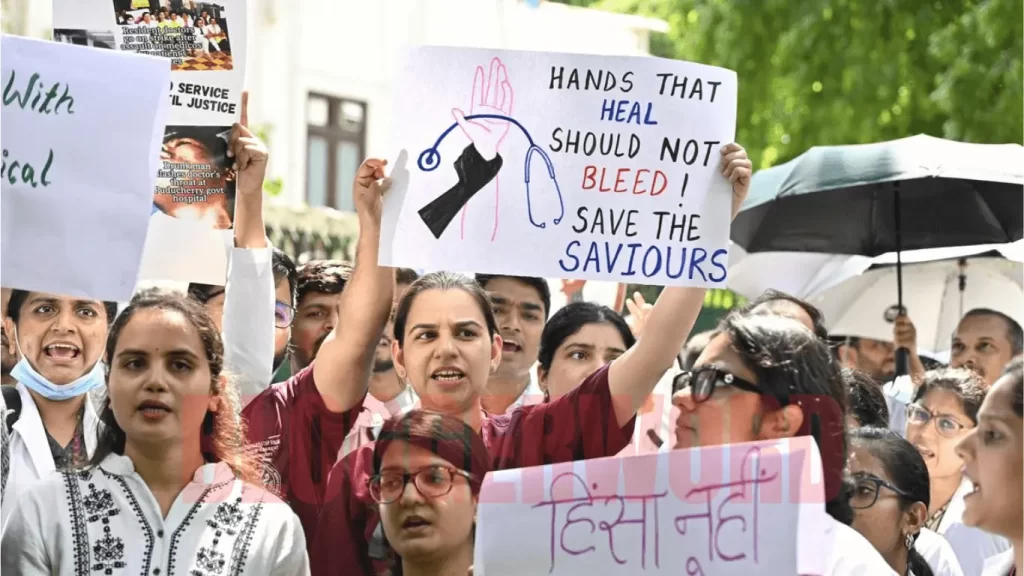The massacre of a woman in Kolkata has provoked a public outcry for justice in the country. The unfortunate occurrence has not only laid bare the perils that women in India are facing but also questioned the ability of law enforcement to put a check on crime. On account of this, the Delhi Police issued a prohibitory order in Central Delhi to control the possibility of unrest. In this writing, we assess the incident, the protests, and the wider consequences of India’s law and order situation.
Kolkata Rape Murder Protests
The Incident That Triggered the Protests
The Kolkata rape protests sparked by the rape-murder incident were the result of an assault on a young woman in the residential area. The slow response of the police to the attack drew huge public anger and resentment. This incident was a clear mark of the dangers women face and the freedoms they cannot enjoy due to the lack of safety measures.
Scale and Impact of the Protests
In the aftermath of the incident, people from Kolkata and other cities gathered together and marched in protest. Wearing candlelights and giving speeches were the symbols to signify the landing of the protest into the ground. The protests of Kolkata Rape case occurred on a nation-wide scale, and almost the same movements were seen in Delhi, Mumbai, and other cities, so such protests reflect the public’s way of expressing their displeasure and need for action. The very magnitude of such protests made it clear how seriously the people were taking the matter and how urgent was the necessity of action.
Public Reaction and Media Coverage
One of the key contributors to bringing the incident and the protests that followed to the forefront was none other than the media. The mainstream media and social networks are flooded with news, comments, and discussions thus, keeping the issue alive, so the society’s opinion is magnified. This event led to actions that demanded stricter laws and better accountability of the justice system in our country.
Delhi Police Response
Issuance of Prohibitory Orders in Central Delhi
The Delhi Police foreseeing protests approximately in Delhi, clamped down prohibitory orders under Section 144 CrPC the restriction mainly pertains to public gatherings in the central Delhi region from where it all starts. It was aimed at not only maintaining peace in that area but at the same time it was also believed to be a way of ensuring that the desires of the public do not turn into a violent event. However, the criticism faced was a lot, and many people thought that it was nothing but a way to stop the public and give a free hand to police thus making an unjust use of the authority to stop the protests.
Legal Framework Behind Prohibitory Orders
According to Section 144 of the CrPC authorities in India can forbid congregations in cases where public safety is endangered. The stated intention of this law is to control riots, however, the application of it at this place was characterized by the public as a loss of the principle of liberty and a restriction on basic human freedoms.
Prohibitory Orders in Central Delhi
Explanation and Implications
Prohibitory orders are tools that law enforcement agencies use in order to control enormous gatherings, especially in sensitive places. In central Delhi, these restrictions were enforced at such crucial places as Connaught Place and India Gate which were chosen for this kind of PMS: the traffic was there to be disrupted. In addition, many police patrol vehicles were placed and checkpoints were made which have affected the normal life of citizens and the fact of such mixed reactions from the public resulted.
Public and Political Reactions of Kolkata Rape
Political and social formations have been the ones criticizing the issuing of prohibitory orders. The discontent of many who thought that it was an excessive facilitation of police power enabling them to quash opposition was raised in a good number. Dissenting voices did remain as despite the official restrictions some small protests still took place which reflected the will of the people wishing to speak out.
Public Reaction and Social Impact
Role of Social Media
Social media was an important vehicle in organizing the protests and molding the public perspective of Kolkata Rape case. Twitter and Instagram are social media platforms that were and are still being used to plan rallies and disseminate information. However, the quick dissemination of content outlined the factors that challenge the validity of the content spread, which may include the influence of untrustworthy sources of information.
Broader Implications for Law and Order in India
The incident of the Kolkata Rape has revealed glaring flaws within the Indian legal system and law enforcement. The citizen’s response was a call for reforms in the judiciary system and a strengthening of women’s rights at home and at work. This circumstance indicates the necessity of transformations at the social level, particularly in relation to gender-based violence and gender equality.
Conclusion
In the end, the Kolkata Rape case as well as the later protests have a continuing change of the Indian society. They did it through, among other things, public reaction, police tasks, and social media playing a part in the drama of this tragic case. The protests ushered in social change by bringing forth criticisms of unveiling the prevailing deep-lying problems in this system of law and order of this country.
We do not know as yet what will be the long-term results of the protests on public policy, nevertheless, they have clearly emerged, a critical talk that, so far, was almost entirely avoided. There is hope that this trauma will cause real positive changes and make life safer for all, as the country is now going through the process of an examination of this Kolkata Rape case.

